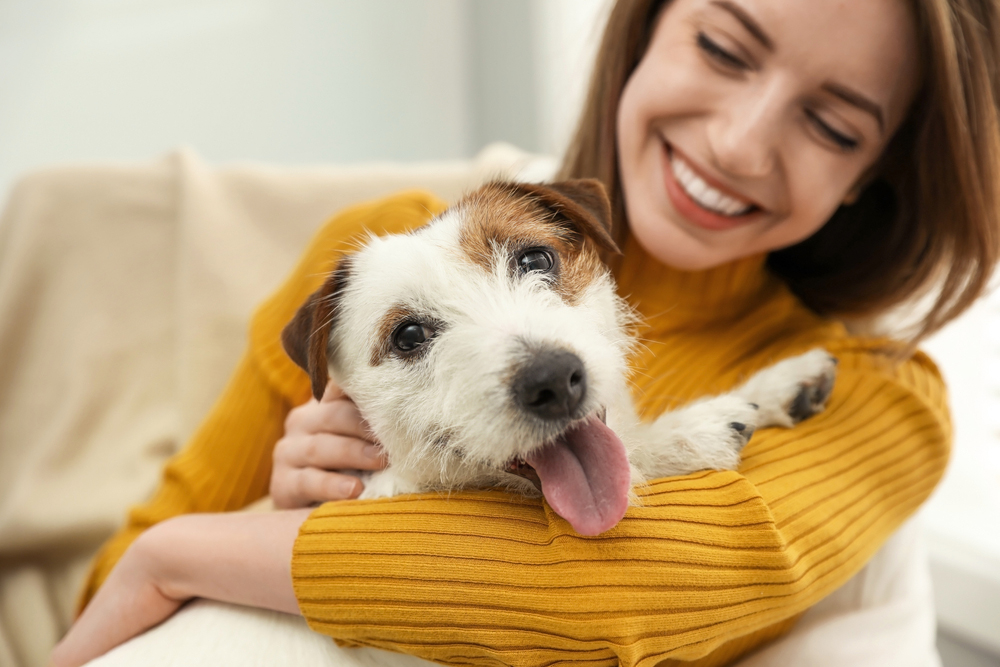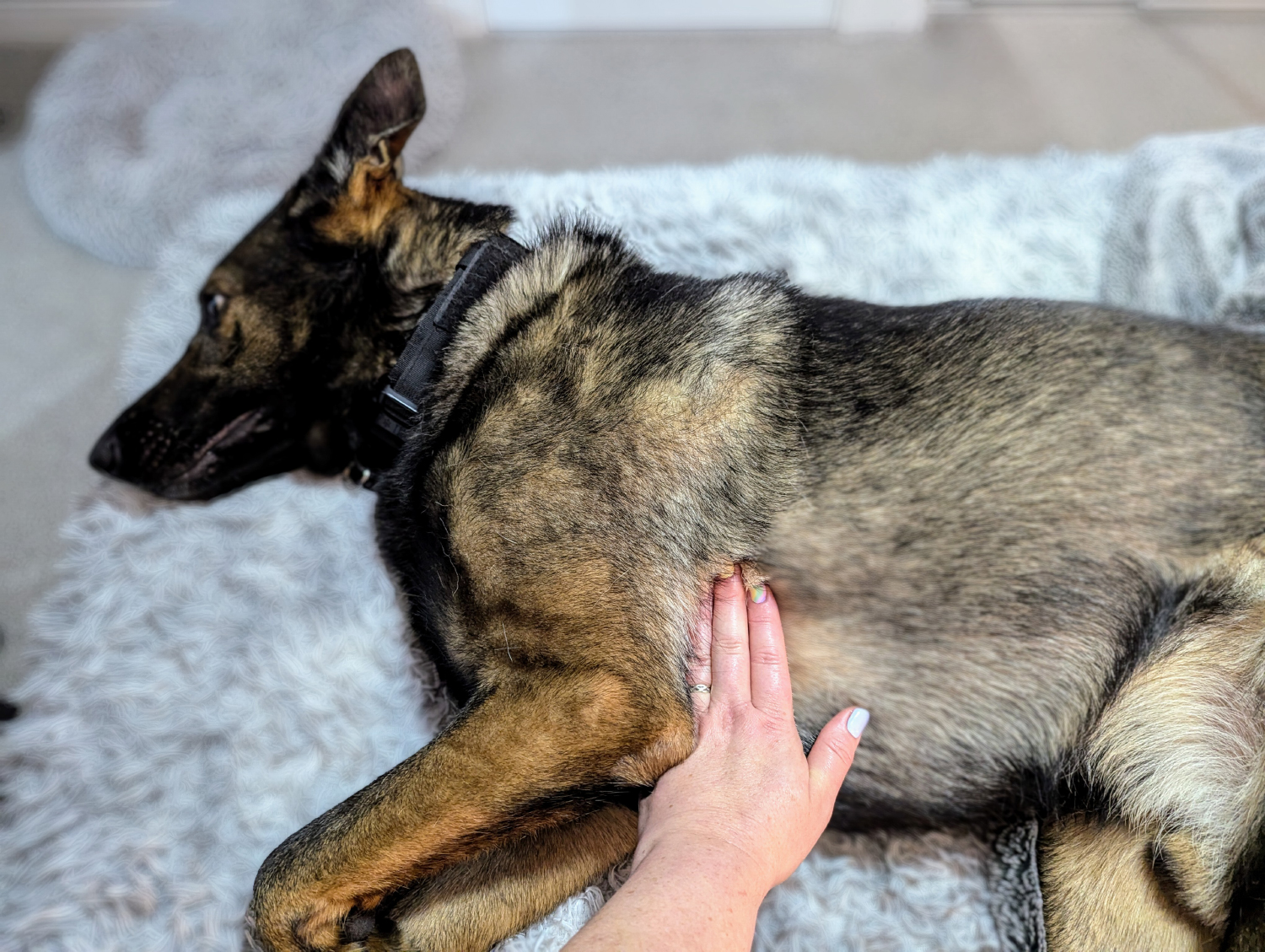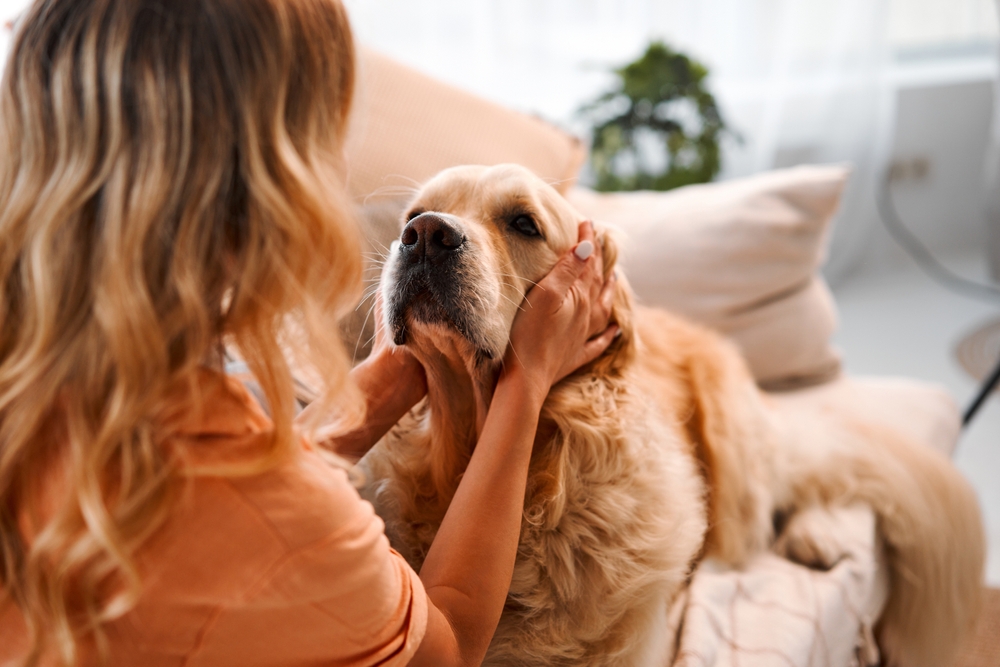Besides hilarious video clips and adorable photos, one main reason dog owners turn to the internet is to ensure their dog is fine. Of course, a vet's physical examination is irreplaceable, but what if you just want some reassurance about your dog's health? Every dog is different, and what's normal for one might be a problem sign for another, so it's crucial to know your dog's healthy normal. Plodding along and sleeping 16 hours a day can be perfectly normal for one dog but a serious illness sign for another, and often, the most important problem sign is a deviation from the norm.
A great way to keep track of your dog's health is to ask your vet to help you create a record of their normal, healthy parameters. That way, you'll have a personalized baseline to alert you to any changes. Use a table like this one, plus photos of their eyes, gums, or any other features, as a reference.
| Name | D.O.B. | ||
| Weight | Ideal weight | ||
| Heart rate | (bpm) | Respiratory rate | (bpm) |
To help you monitor your best friend's health, we've compiled this list of 12 Ways to Tell If Your Dog Is Healthy. This isn't a substitute for veterinary advice, but it can assist you in assessing your dog's health and spotting any problems.

The 12 Ways to Tell If Your Dog Is Healthy
1. Talk To A Vet
If something about your dog worries you, the safest thing is to consult a vet. You can make an appointment at your local veterinary practice, or if you want guidance without leaving home, you can schedule an online appointment with a reliable televet service like PangoVet, where you can talk to a qualified veterinarian about your dog's health. They can discuss your concerns and help you decide if your dog needs a physical examination or provide reassurance if it's healthy.
2. Demeanor
When assessing a patient, we use terms like:
- Bright, alert, and responsive (BAR)
- Boisterous
- Excitable
- Dull, depressed
- Subdued
- Agitated
These terms can apply to your pet too, but you don't need to be too clinical. If your dog is as lively, friendly, quiet, or active as usual, it's a good sign of health. A normally lively dog acting subdued can be a clear problem sign, as can a lazy dog suddenly being up and pacing. Friendly dogs becoming aggressive, or independent dogs becoming clingy, can also indicate something's wrong.
One of the most challenging owner descriptions is that their dog is "just not him/herself," but this can be an important early pain or illness indicator. Never ignore or underestimate a change in your dog's demeanor.

3. Heart Rate
Your dog's heart rate changes due to various factors. Some are normal, others signal illness, so knowing your dog's resting heart rate helps assess changes.
There are places to check your dog's heart rate:
| Carotid artery – in the jugular groove, either side of the trachea on the neck. |  |
| Chest wall (left side) – on lean dogs, feel (or see) the heart beating under the ribs near the elbow when standing. |  |
| Femoral artery – feel it when your dog stands or lies down. Place fingers in the thigh muscle groove below the groin. Ensure your dog is comfortable first! |  |
Heart rate generally decreases with dog size, but obesity can affect it. Use this table as a guide:
| Dog size | Normal resting heart rate (bpm) | |
| Toy | < 12 lbs | 120 – 160 |
| Small | 12 – 25 lbs | 100 – 120 |
| Medium | 25 – 50 lbs | 80 – 100 |
| Large | 50 – 75 lbs | 70 – 100 |
| Giant | > 75 lbs | 50 – 80 |
Here are common heart rate change ways:
| Increase | Decrease |
|
|
4. Respiration Rate
The number of breaths your dog takes in a minute changes throughout the day. The most reliable time to measure is when it's asleep. Respiration rate is a bit faster in smaller dogs than large ones, but not as size-variable as heart rate.
The normal resting respiratory rate for dogs is 15 – 30 bpm.

5. Eyes
Some say eyes are the soul window and can show health. Your dog's eyes can indicate feelings, dehydration, and serious health conditions. Consider these factors when assessing:
- Are they bright and clear? Dull or cloudy?
- Are the whites of the eye (sclera)
- really white?
- pink/red?
- yellow?
- Are they sunken? Is there a gap between the globe (eyeball) and the eye socket?
- Are the eyes equal in size and position?
- Are the pupils equal in size and position?
- Is your dog squinting or avoiding bright light?
- Are there any changes to the pigmentation of the iris?
Even subtle changes can signal a problem. Give your vet as much info as possible.
6. Gums
Healthy gums are salmon pink and moist. Many dogs have dark pigment on gums, making assessment harder, but find a non-pigmented area. Like eyes, gum changes provide info:
| Dry or tacky | Dehydration |
| Pale, white | Hypotension (eg. low blood pressure, shock, anemia) |
| Slow capillary refill time (CRT) | Hypotension (eg. low blood pressure, hemorrhage) |
| Blue or purple tinge | Hypoxia (low blood oxygen) due to cardiorespiratory disease and some toxins |
| Yellow | Icterus/jaundice indicating hepatic (liver) disease or hemolysis (damaged blood cells) |
| Dark pink/red | Endotoxins/sepsis (eg. gastric or intestinal obstruction, peritonitis) |
| Red spots/patches | Clotting problem |
How to check your dog's CRT:
Find a pink gum area, push your finger to blanch it white, and measure color return time.
Normal CRT is around 1-2 seconds.

7. Movement and Posture
Changes in your dog's gait, posture, getting up and down, and movement ease can show muscle, bone, joint health and internal organ and neurological system health.
A hunched back could be spinal or abdominal pain. Difficulty standing and moving could be arthritis, weakness, or neurological.
Dogs mask pain well, so take even subtle movement and posture changes seriously.
8. Appetite
A normal appetite doesn't guarantee all's well but indicates how your dog feels. Some dogs lose it for minor reasons, while others (like Labradors) would eat even with missing limbs. Skipping a meal rarely concerns, but regular or persistent appetite changes, even increased, should be addressed. If your dog has trouble keeping food down, see a vet.

9. Feces
All dogs have occasional diarrhea, but generally, a healthy dog produces formed feces regularly. Your dog's normal depends on metabolism, food type, and feeding frequency.
Some dogs have firmer poops, but all should produce pick-upable, not rock-hard, dry feces. If not, talk to your vet.
10. Drinking and Urination
How much and how often your dog urinates is diet and drinking habit-influenced, so they're related. Urination volume, color, smell, and frequency changes can result from diet, infection, bladder stones, cancer, kidney disease, or endocrine diseases like diabetes or Cushing's disease.
Dogs may drink more due to temperature or food changes, but above conditions also increase water intake.
Measuring 24-hour water intake is useful. If seeing a vet, collect a urine sample.

11. Teeth
Our dog's dental health is often neglected until a problem. Regularly check for disease signs. Some dogs are more cooperative, and start young. For less cooperative ones, use a toy or food to open their mouth for visual assessment.
Smelly breath, drooling, dropping food, or one-sided chewing are potential dental disease signs, often ignored.
12. Tender spots
During daily cuddles, run your hands over your dog's body, limbs, and tail to check for pain, tenderness, lumps, or bumps. Minor issues may be nothing, but early detection could save your dog's life.

Conclusion
Worrying about your dog's health is normal. If seeking a systematic home health assessment, the above points should guide you. Remember, talking to your vet about concerns is the best and most important step for your dog's happiness and health.
